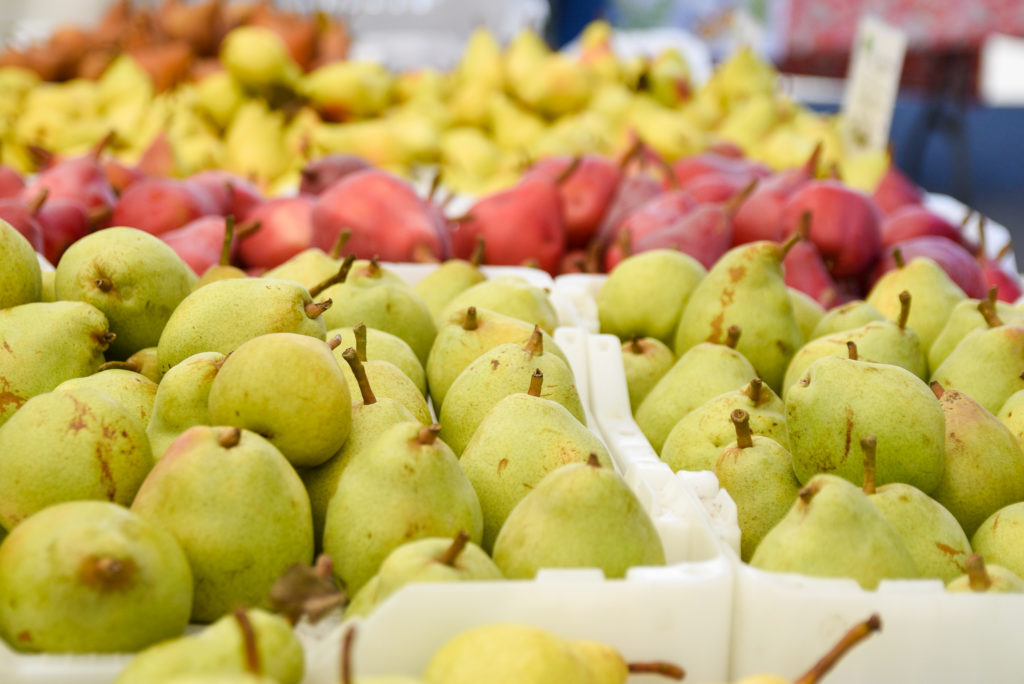Pears

The pear tree and shrub are a Pyrus species, within the Rosaceae family, along with apples, stone fruits, and strawberries. Their distinct, slightly gritty texture comes from their stone cells, which also make up other fruits’ hard tissues like peach pits.
There are two main categories of pear varieties, Asian and European, which developed over the expansive timeline and geography of pears. The word “pear” itself can be traced back to the ancient Semitic term for fruit, pirâ. Pears’ native range is difficult to pin down because they have been a part of human diets since before the New Stone Age (10000 BC), but they are thought to be naturally occurring in coastal and temperate regions of Western Europe, North Africa, and Asia.
Asian Pears
Pyrus pyrifolia is the species of trees that bear Asian pears, also known as Apple pears or Sand pears. Asian pears are native to China, Japan, and Korea, and the plants first made their way to California around the 1850s, brought by Chinese immigrants.
Compared to their European counterparts, the Asian pears you’ll pick up at the farmers market are tree-ripened and ready to eat immediately after picking. Visually, they are rounder with more russeting. And when biting into them fresh, or adding them as a salad topping, you’ll notice that they are crisper and less sweet, but often just as juicy.
European Pears
Although European pears seem to signify fall, their harvest season actually starts in summer, when they are picked green, or before they are fully ripe. European varieties, Pyrus communis, contain a ripening enzyme that’s triggered by cooler temperatures, so after they are picked, they are placed in cold storage, where they spend about 30 days to ripen. Pears ripen from the inside out, so unripe pears will be hard and not as sweet, while overripening can make them soft and mealy. Unripe pears can be left to ripen at room temperature.
These varieties are pyriform, or pear-shaped, and their flesh is soft and sweet. European pears are favored by chefs for poaching or baking, since they hold their shape well when cooked.
